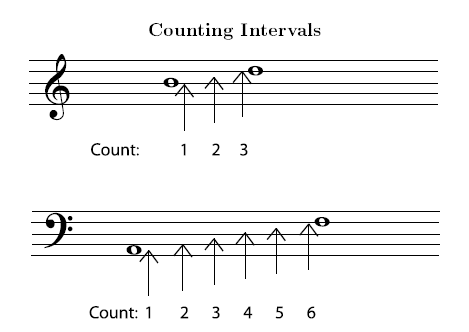The first step in naming the interval is to find the distance between the notes as they are written on the staff. Count every line and every space in between the notes, as well as the lines or spaces that the notes are on. This gives you the number for the interval.
Example

To find the interval, count the lines or spaces that the two notes are on as well as all the lines or spaces in between. The interval between B and D is a third. The interval between A and F is a sixth. Note that, at this stage, key signature, clef, and accidentals do not matter at all.
The simple intervals are one octave or smaller.

If you like you can listen to each interval as written in the above Figure 4.26: prime, second, third, fourth, fifth, sixth, seventh, octave.
Compound intervals are larger than an octave.

Listen to the compound intervals in the above Figure 4.27: ninth, tenth, eleventh.
Exercise 4.10:
Name the intervals.

Exercise 4.11
Write a note that will give the named interval.

- 6190 reads






